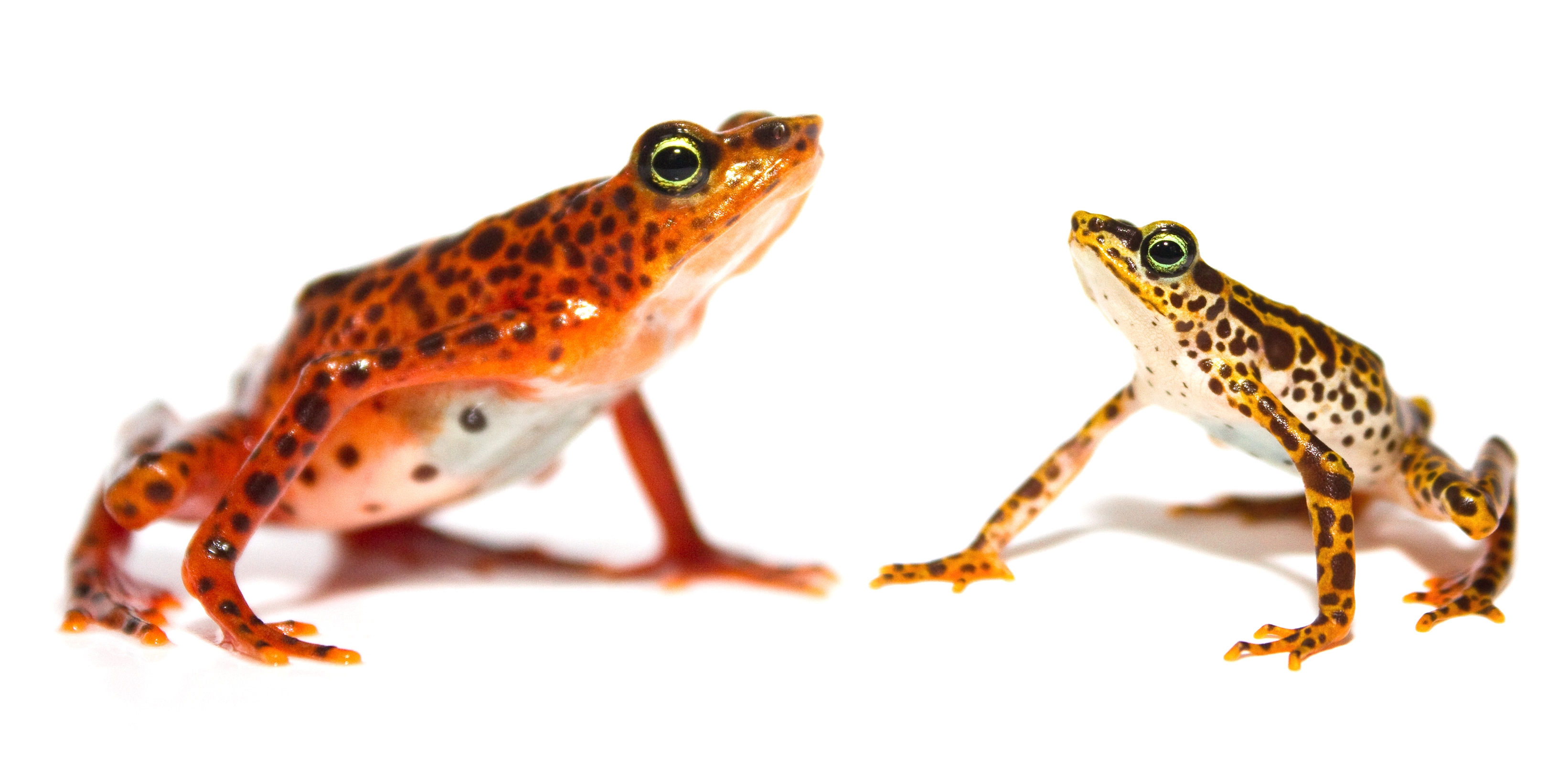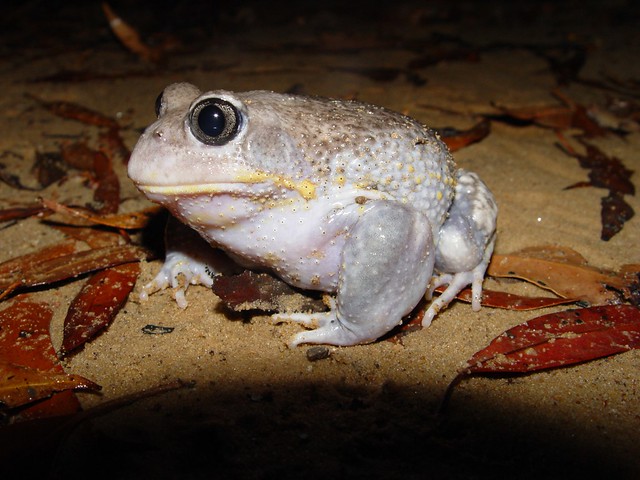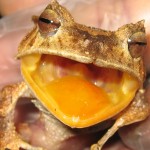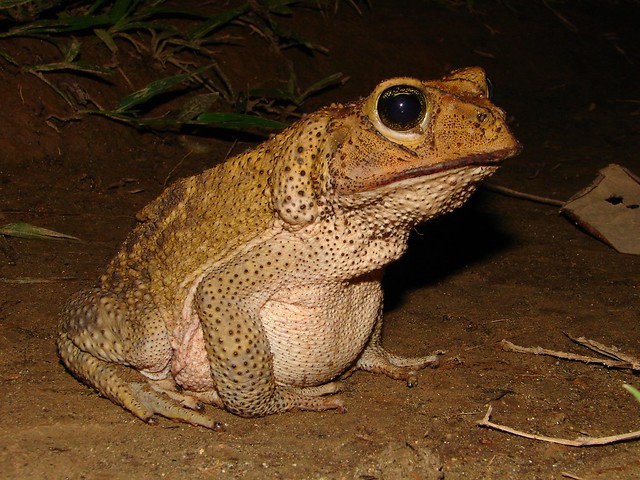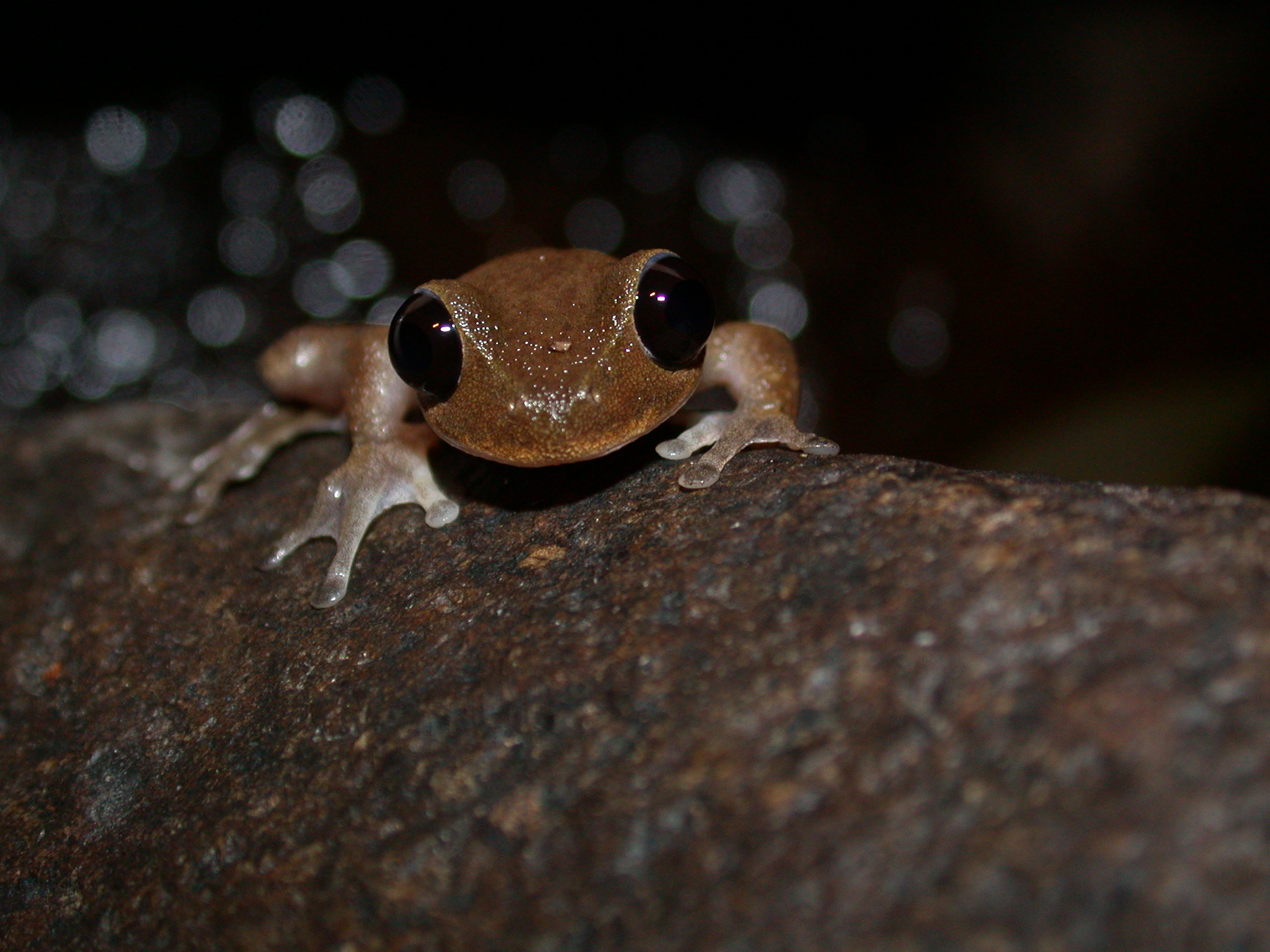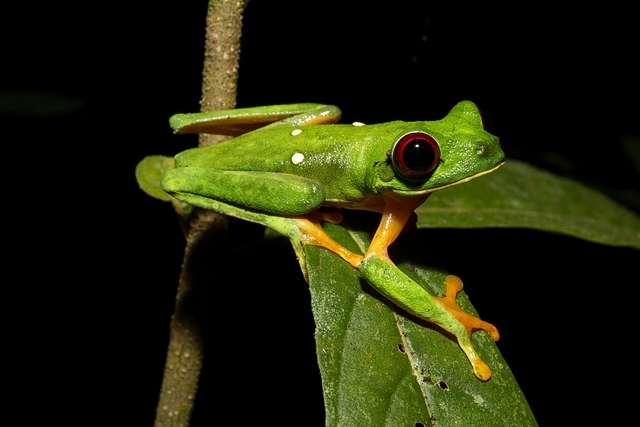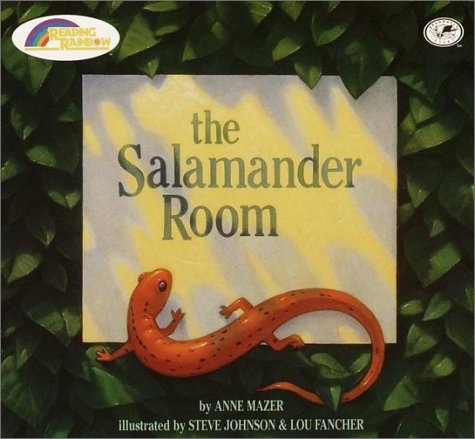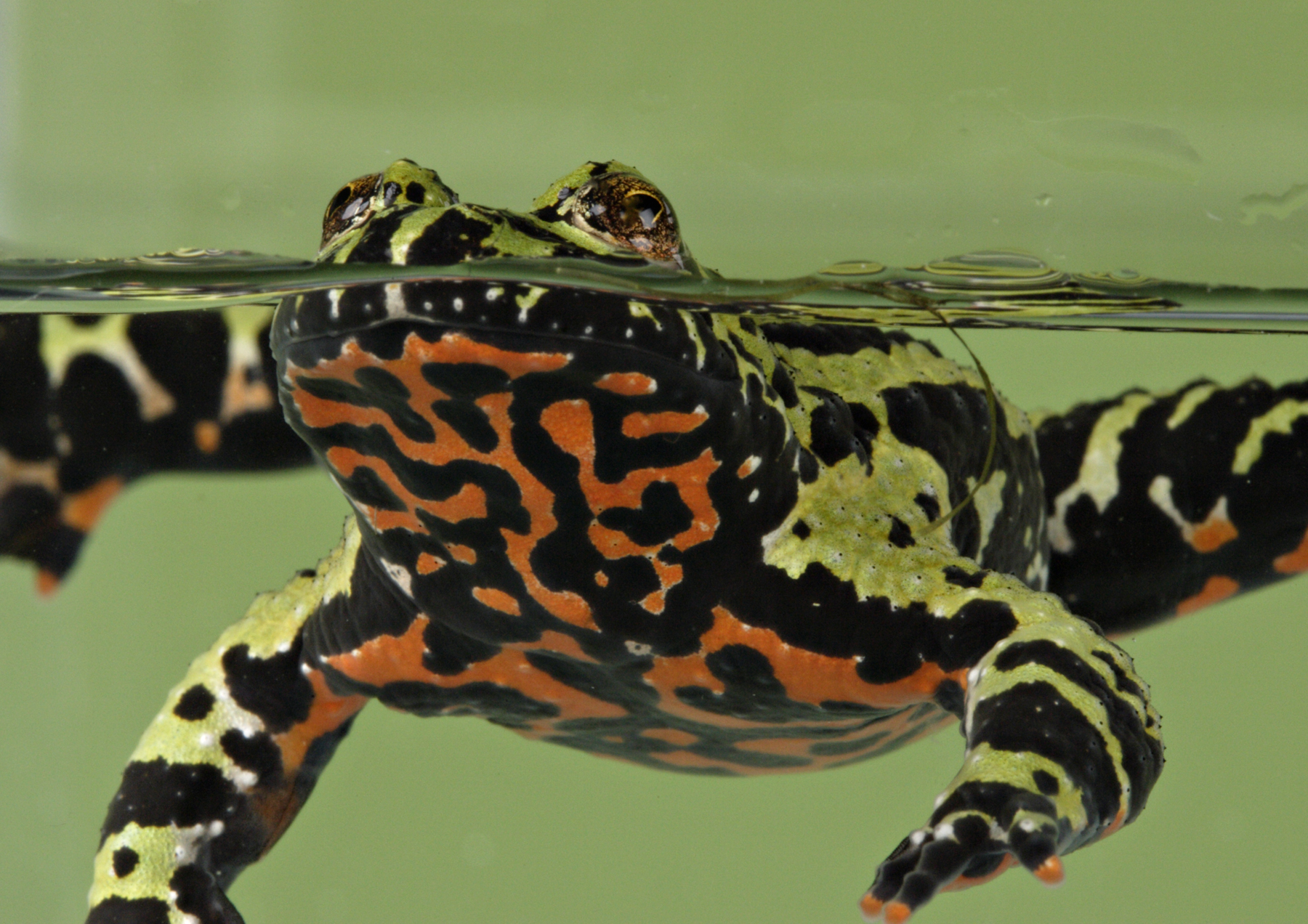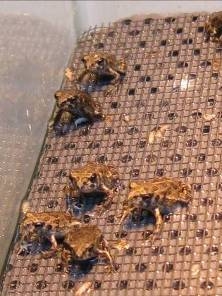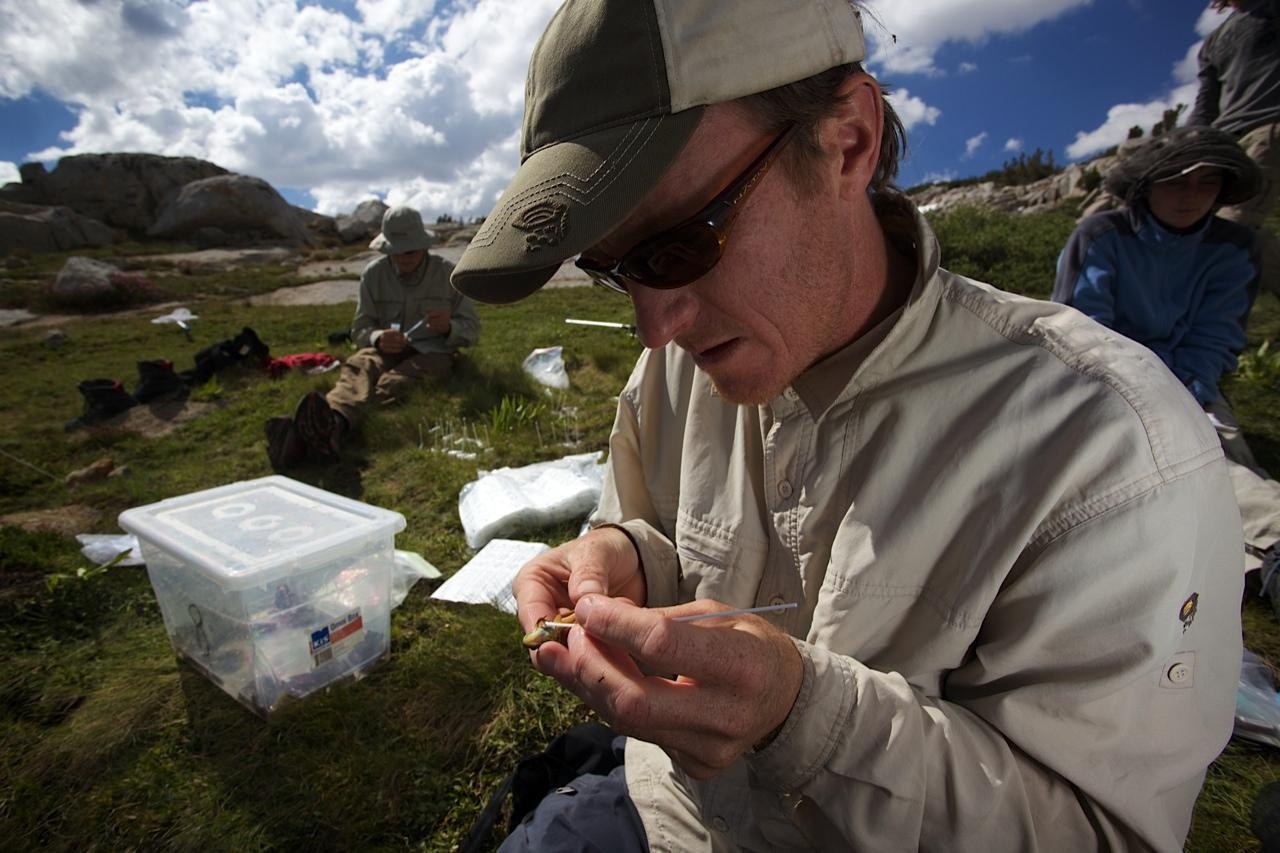
Dr. Vance Vredenburg swabs frogs to test for chytrid. (Photo courtesy of Vance Vredenburg, San Francisco University)
A new study published on Aug. 16 in the journal PLoS ONE found that Batrachochytrium dendrobatidis (Bd), the fungus that causes chytridiomycosis, is indeed present in Asia, but at significantly lower levels than anywhere else in the world. In fact, researchers found that just more than two percent of the individuals they tested were positive and that the fungus was present only in the Philippines, Kyrgyzstan, Laos, Indonesia, Malaysia and South Korea. Now scientists want to know why.
An international research team conducted this study between 2001 and 2009, examining more than 3,000 amphibians, most of which were frogs, from 15 Asian countries. It was the first large-scale investigation of the disease conducted in Asia.
We spoke with Dr. Vance Vredenburg of San Francisco University, one of the researchers from the study and a leading expert in this disease. Here’s what he had to say:
1) This was the first comprehensive survey of chytrid in Asia. Why do you think this hasn’t been done before?
I think expense is probably a huge hindrance on research. Our study was conducted in 15 countries and our data was collected by a large number of field personnel. The cost of analyzing the samples is not cheap–costs range from $5 to $30 per sample, depending on where and how they are analyzed. We ran nearly 3,500 samples.
2) What do your findings mean in the battle against chytrid, and what is your next step?
Our findings provide an important milestone because they are the first broad survey for Bd across a vast continent that harbors a large amount of amphibian diversity. Our hope is that researchers will now be able to return to many of these sites and see if the dynamics of the pathogen host system change and if so, in what direction. Our next step will be to follow up on as many sites as possible.
3) Were you surprised by the findings? Why or why not?
Yes. I was surprised by how low the prevalence was across what appears to be such perfect habitat for this pathogen.

This frog, Hylarana similis, is native to the Phillipines and is a species now infected by chytrid. (Photo courtesy of Rafe M. Brown, University of Kansas)
4) Why do you think that frogs in Asia aren’t being wiped out at the same rate as frogs in the neotropics?
There are only a few possibilities. We describe them in detail in the discussion [in the paper], but in short, either Bd is only just emerging in Asia and thus we haven’t seen mass die-offs due to chytridiomycosis yet, or it is endemic and there are either abiotic or biotic influences holding the pathogen at bay. We still don’t have the answer to this.
5) If this outbreak in Asia is relatively recent, where did it originate on the continent?
We discovered one–and only one–place out of 300 sites where an outbreak may be occurring, at a site in the Philippines.
6) The Philippines are a series of Islands. If you believe there is or is going to be an outbreak there, how did it get there and how can it spread to other places in the world?
We propose that human trade is involved, specifically that farms raising American bullfrogs could be the source of Bd that could then spread to wild frogs [if some escape]. We don’t know where it originated or how it spread for sure.
7) Are there Asian amphibians other than frogs that appear to be affected by chytrid?
Asia has a rich fauna of both salamander and caecilians, but to date we do not know if they are affected by Bd. Our study did not sample caecilians and includes only a small number of salamanders.
8) A few amphibian species, such as bullfrogs, are said to be carriers of Bd, but rarely seem to die from it. What exactly allows a species to be a “carrier,” or is there still not enough information known about that?
We don’t yet know how bullfrogs (Rana catesbeiana) are able to survive Bd infections without showing symptoms of chytridiomycosis.
9) Do you believe that these Asian frogs that seem to be less affected may be carriers as well?
We need more information to assess this. My guess is that there are probably some species that can sustain infections just like American bullfrogs and could act as carriers.
10) What other threats do frogs in Asia face and what is being done to address those threats?
The two major threats in Asia are habitat destruction and hunting and gathering amphibians to eat.
—Sara Bloom Leeds, Smithsonian’s National Zoo
